TWO-STROKE TUESDAY | 2007 HONDA CR125
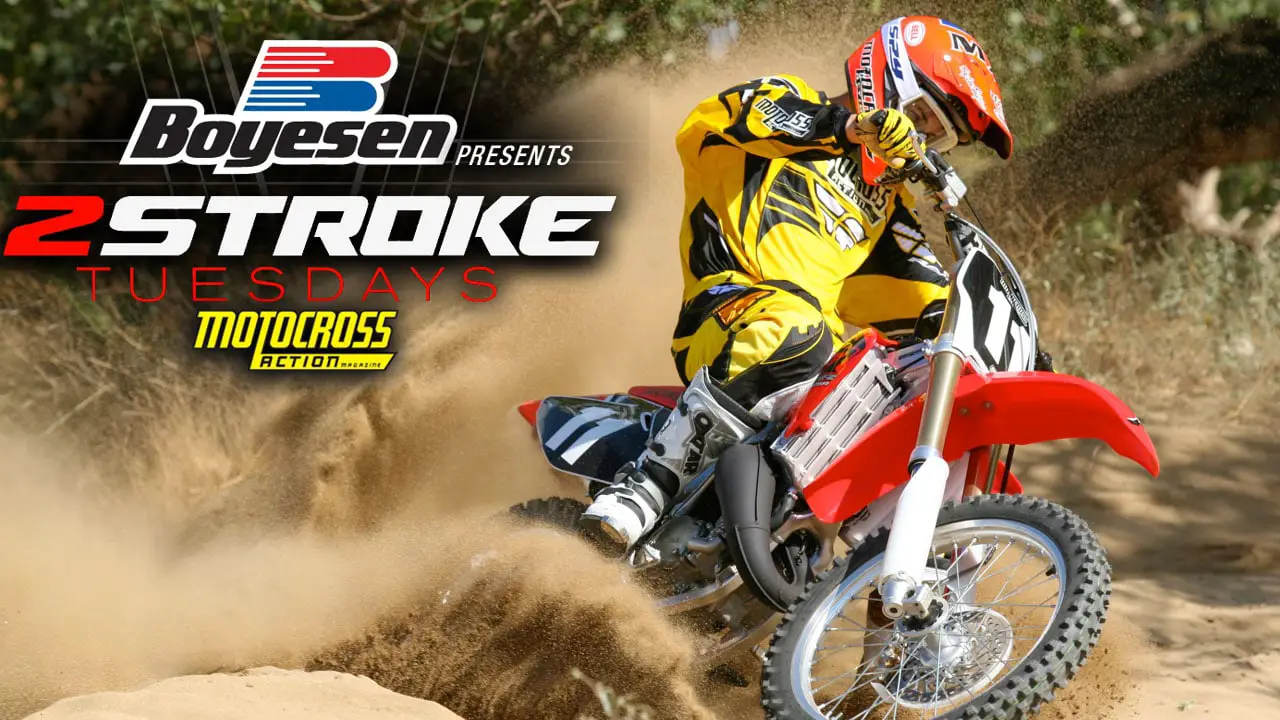 This MXA archived test was featured in the 2007 March issue of Motocross Action Magazine.
This MXA archived test was featured in the 2007 March issue of Motocross Action Magazine.
It was just 12 short months ago, in this same space, that MXA said that the Honda CR125 was on its last legs for three reasons: (1) According to industry reports, CR125 sales dropped 40 percent. (2) Honda is no longer promoting the CR125 through use by its in-house race team or any of its satellite teams. (3) The 2007 Honda CR125 is unchanged from the 2006 CR125 (or 2005 CR125 for that matter).
We predicted that the CR125 would get the ax. And it did. Starting next season, there will no longer be any two-strokes in the Honda lineup. No CR85s. No CR125s. No CR250s.
The demise of the glorious era of Honda two-strokes, which started in 1973 and will end in 2007, makes this more of an obituary than a bike test. But test we must. Here, in short, sweet and sober tones, is what we think of the 2007 Honda CR125.
Q: WHAT ARE THE BEST TRAITS OF THE 2007 CR125?
A: There are two really significant attributes of the ’07 CR125.
Handling: Honda learned more about aluminum frames from their early failures (dating back to 1997) than they would have if they hadn’t made any mistakes. The CR125’s Delta-Box frame is the recipient of all that Honda learned.
Suspension: Every MXA test rider knows that the CR125 doesn’t have the latest suspension components, but they like the way the old-school Kayaba parts work.
Q: WHAT ARE THE WORST TRAITS OF THE 2007 CR125?
A: There are two significant problem areas on the ’07 CR125.
Power: Statistically, the Honda CR125 makes good horsepower. The problem isn’t the amount of power, but its breadth. Honda’s powerband is short. It requires the rider to work hard to keep it on the pipe.
Life span: This is all she wrote. The 2007 model is the last year for the CR125. That doesn’t build consumer confidence or help the resale value.
Q: HOW DOES THE 2007 CR125 REALLY RUN?
A: The CR125 powerband is not easy to use. It is short and punchy. No, make that shorter and punchier than any other engine on the track. This is a gun-and-run engine that demands that the rider be quick on the draw. To be successful on the CR125 against the wider and broader powerbands of the YZ125 and KTM 125SX, a CR rider has to stir the five-speed transmission for all it’s worth. Slamming the CR125 from gear to gear is the only way to take advantage of the shockingly short mid-and-up powerband. A CR125 rider works up a sweat just to stay even. A good rider with a can-do attitude can do wonders on the CR125, but he will be jammin’ in places where riders on other brands are just cruising.
Q: WHAT ABOUT THE GEARING?
A: Add one tooth to the rear. With the stock 52-tooth sprocket, the 2007 CR125 has a lot of trouble staying on the pipe when jumping the gear ratio chasm between second and third. An extra tooth on the rear closes the gap and brings the CR125 to life. Don’t spend a penny on pipes, widgets or chrome hub caps until you’ve changed the rear sprocket.
Q: HOW DOES THE CR125 HANDLE?
A: This is a sweet machine. It’s a shame that future generations won’t have the opportunity to ride the best-handling bike that Honda ever built. It feels light, is accurate to a fault, and is above reproach. The handling and suspension were never the CR125’s problem; the engine was the albatross around this great bike’s neck.
Q: WHAT DID WE HATE?
A: The hate list:
(1) Consumer confidence: Except for museum owners, who is going to walk into a showroom and buy a bike that will be discontinued the following year? Honda deserves credit for being brave enough to announce that they would stop two-stroke production in 2008, but it can’t be good for the sales of 2007 models.
(2) Grips: Honda’s grips last forever. They will shred your hands before they wear out.
(3) Gearing: Gear it down or be prepared to burn up clutch plates.
(4) Tires: We commend Honda for mounting a Dunlop 742FA/756 tire combination. The 742FA is better than the old 742, but not as good as the 739 on hard dirt or the 756 on soft dirt.
(5) Powerband: Good horsepower, but don’t blink.
(6) Pipe: FMF and Pro Circuit have made millions off of CR125 owners over the last three decades, but as the two-stroke era draws to a close (and the CR125 does its farewell tour), they only get one last chance to sell you a pipe. Buy it. Pipes help the CR125 make the most of what little it has.
Q: WHAT DID WE LIKE?
A: The like list:
(1) Ergonomics: This bike is so right in so many ways that we are going to miss it.
(2) Parts: Awesome accouterments: great frame, flawless clutch, powerful front brake, sweet swingarm and ultralight hubs.
(3) Reliability: The CR125 is built Honda tough. Good parts, excellent quality control and no shortcuts.
(4) Forks and shock: They may be as old as Sinatra, but they can still sing.
Q: WHAT DO WE REALLY THINK?
A: This is a love story that started in 1974. As a young thing, the CR125 was sweet, pretty and charming. As she got older and a little weathered around the edges, she still had her good moments. Now, at the age of 33, she will fade from the limelight forever. We’ll remember the good years and forget the bad ones—she deserves only good thoughts.
MXA’S RECOMMENDED JETTING SPECS
Main Jet: 440
Pilot Jet: 50
Needle: 27-67
Clip: 3rd from top
Air screw: 1-3/4 turns out
Notes: We have never found the perfect brass for this baby. Going as far back as the ‘90s, the CR125’s jetting has mystified us. The 2007 didn’t surprise us with its waffling fuel flow.
MXA’S RECOMMENDED FORK SETTINGS
Spring rate: 0.44 kg/mm
Oil height: 350cc
Compression: 12 clicks out
Rebound: 10 clicks out
Fork leg height: Level
Notes: The forks are old, but they are fairly well sprung.
MXA’S RECOMMENDED SHOCK SETTINGS
Spring rate: 4.7 kg/mm
Race sag: 100mm
Hi-compression: 2 turns out
Lo-compression: 10 clicks
Rebound: 12 clicks
Notes: Many Honda riders run the race sag as low as 110mm to make the bike feel smaller and closer to the ground.


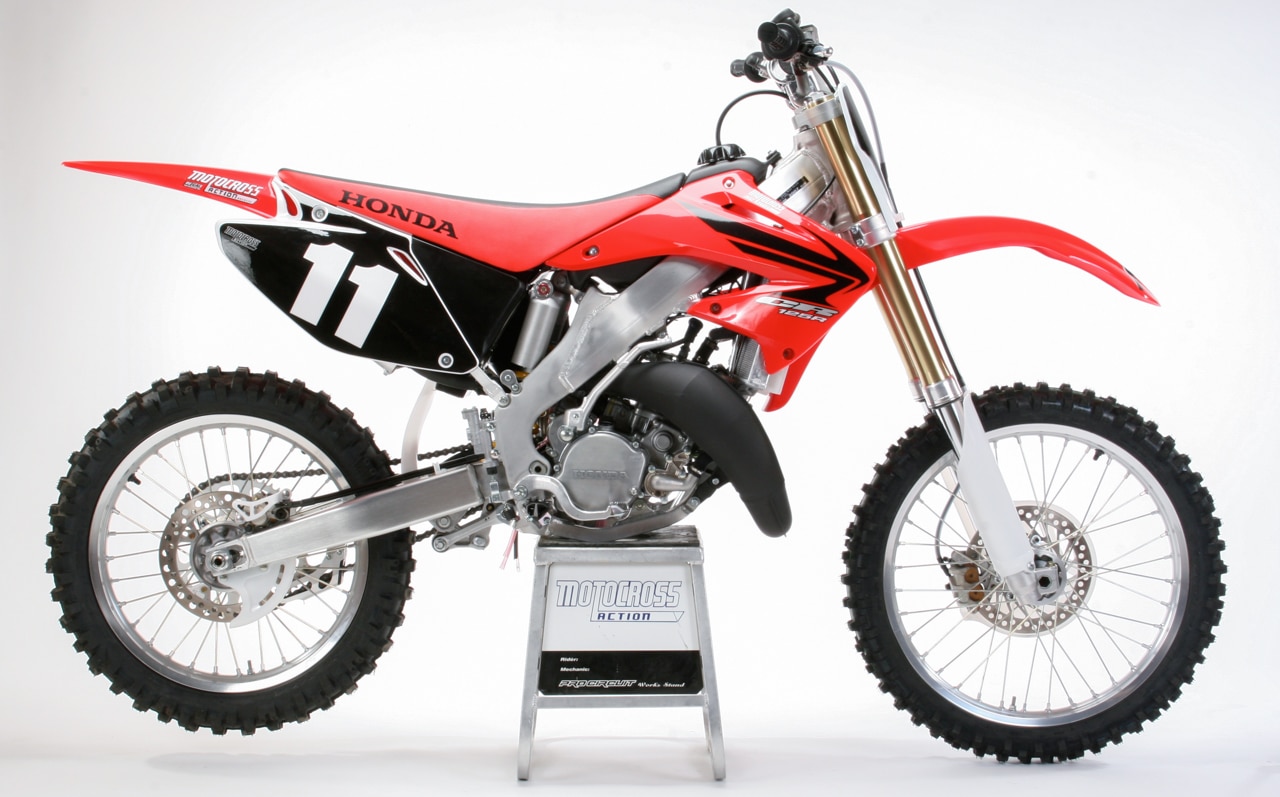

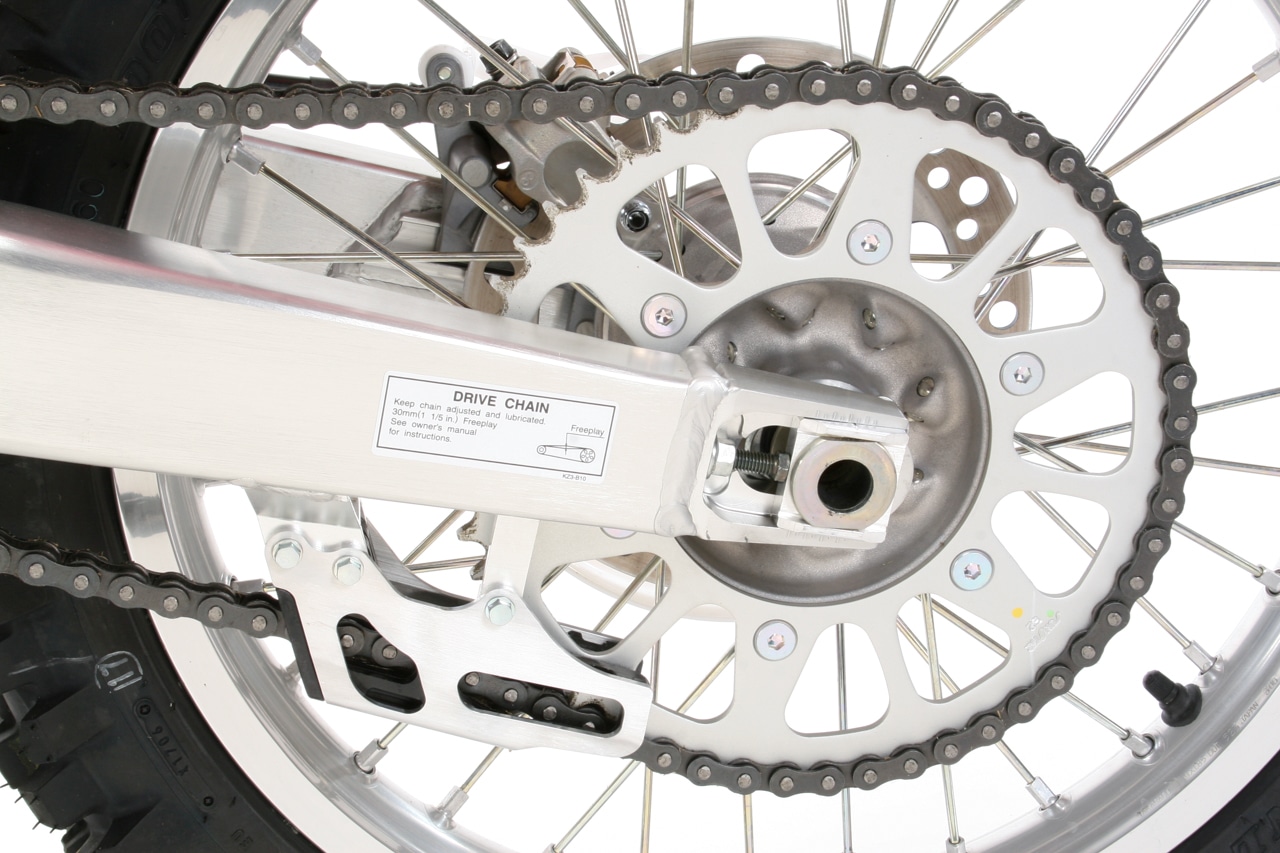
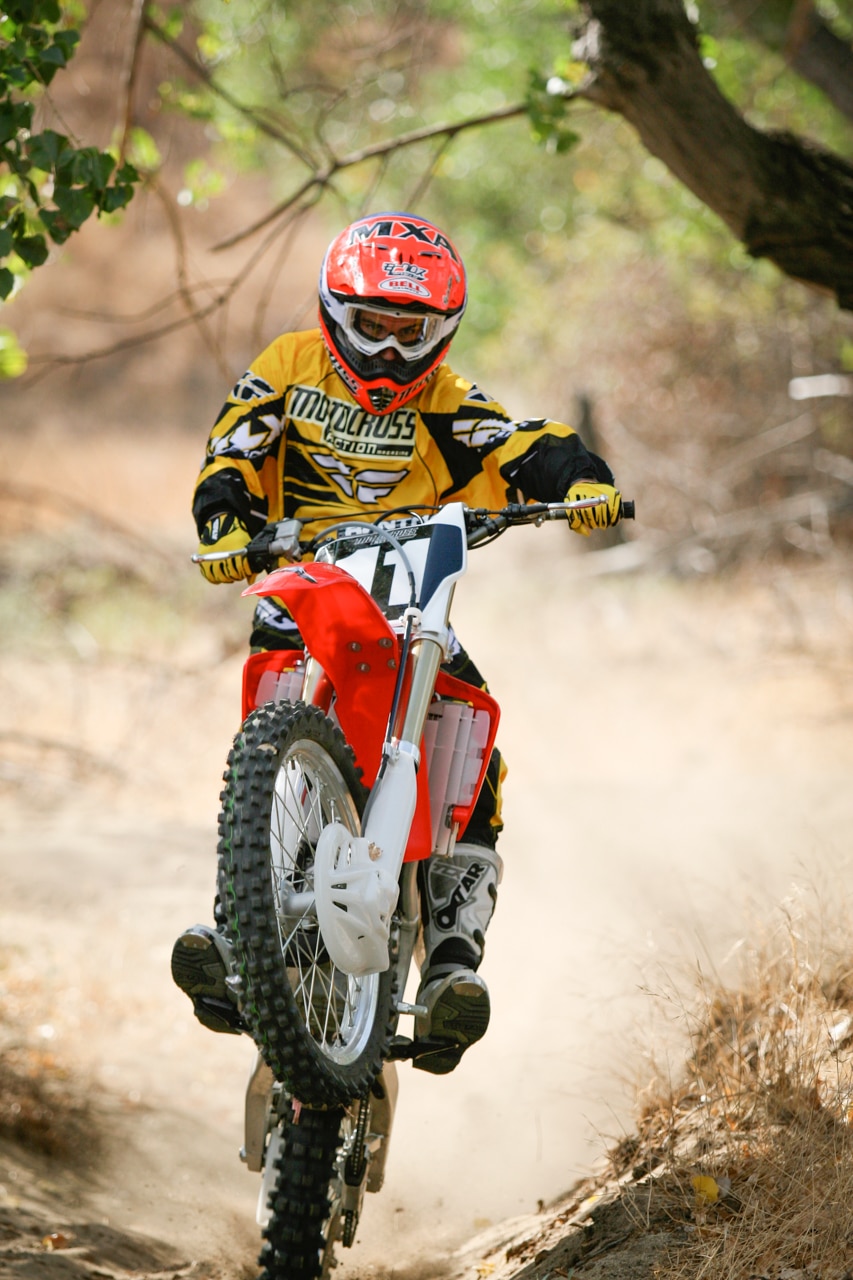


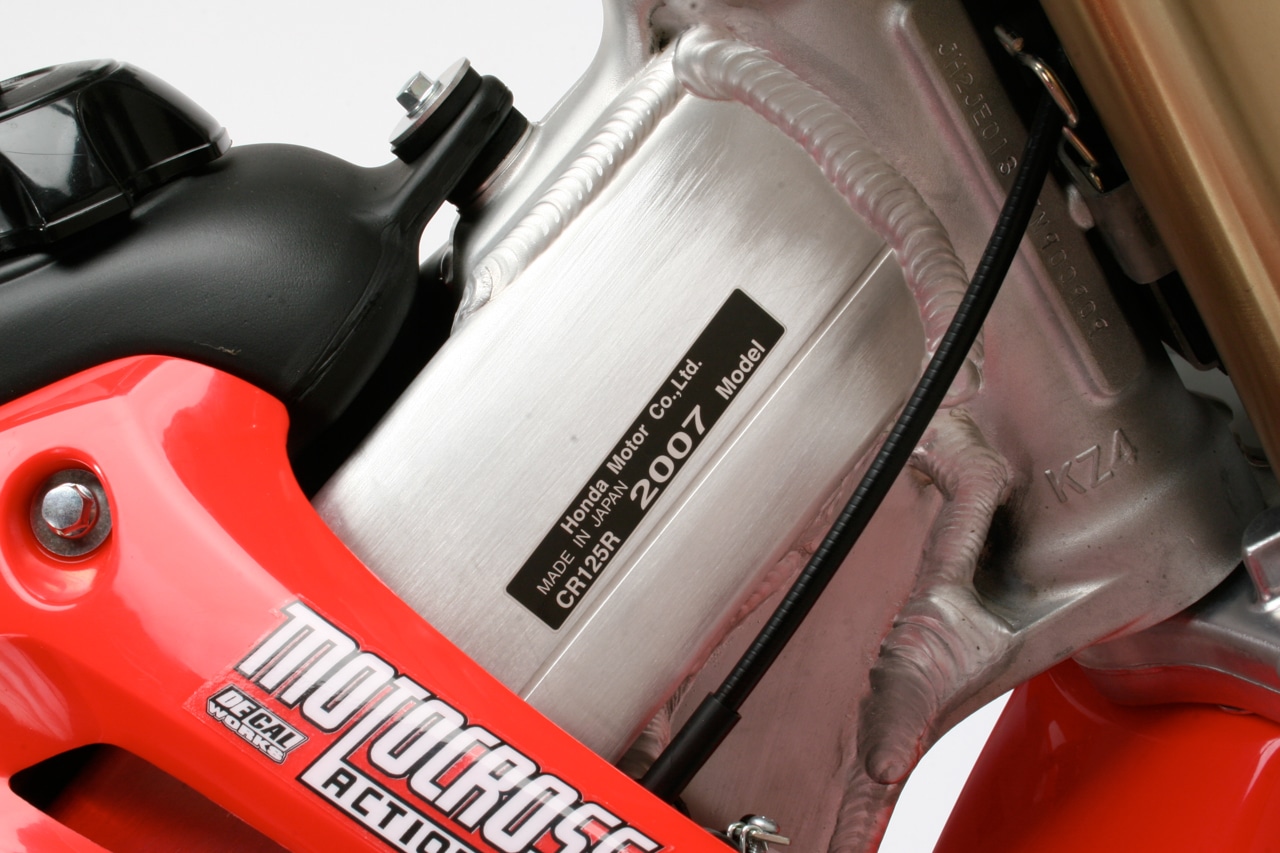
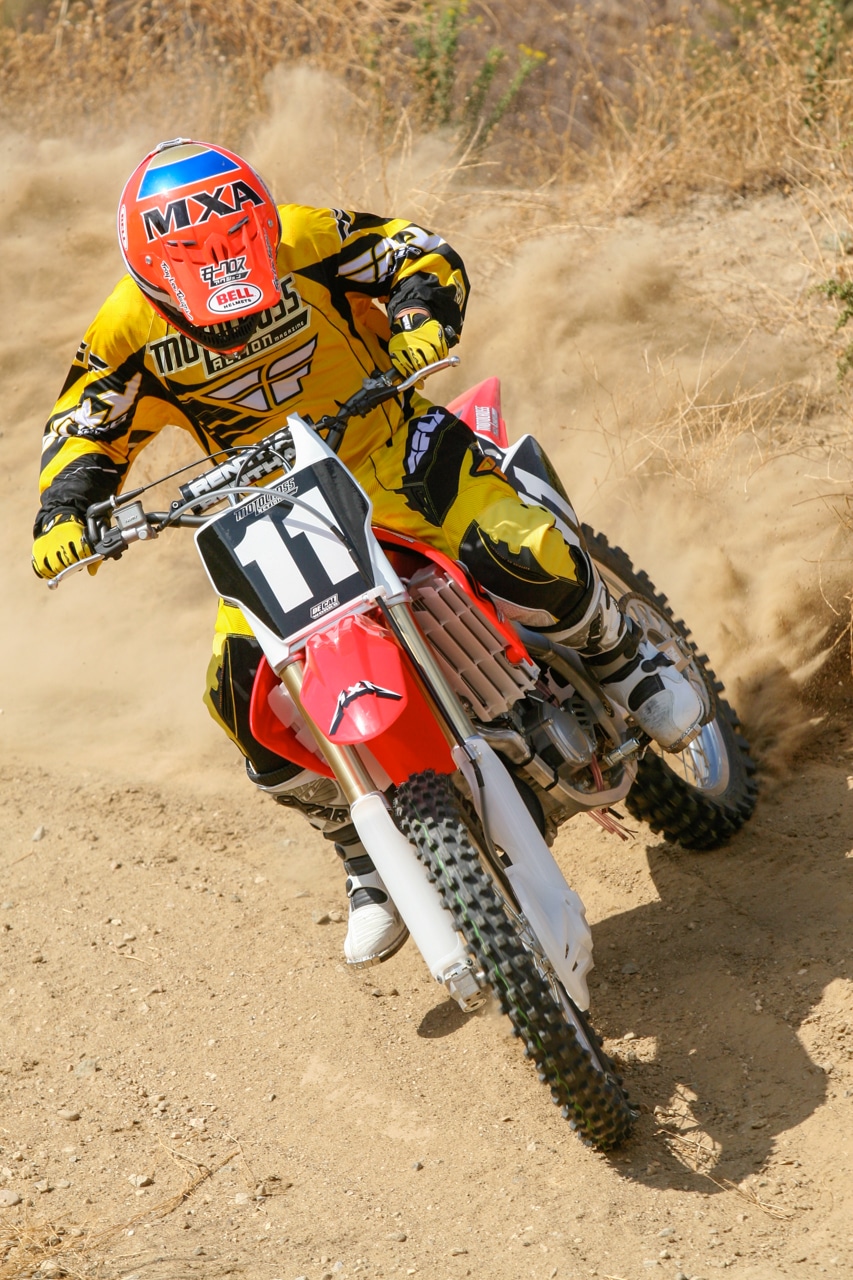


Comments are closed.